The past couple of years has ushered in a number of changes for the marketing strategies of major defense and global technology brands serving the federal government. As a trusted marketing and PR agency to B2G clients, Bluetext has seen a massive shift towards digital marketing initiatives in a short amount of time. Once upon a time, government defense and technology marketing was concentrated in stacks of Federal IT and Defense magazines. These were reams of tangible, tactile publications that B2G paid big bucks to advertise in. However, the recent shift toward digital advertising has been embraced across industries– government agencies included.

The precipitous decline in print publications, combined with the impact of COVID-19 and budget cuts on the federal agency buyer’s ability to travel to attend industry conferences, trade shows and seminars has flipped traditional marketing models on their head. The resulting void of strong physical content and branding has led to an increased thirst for more readily accessible “premium” content—white papers, e-books, survey reports and other in-depth materials that can be indispensable for government decision-makers. Digital content marketing has been embraced as a cost-effective and more accessible means of reaching target government buyers.

Previously, B2G companies could load up on traditional marketing to push government contracting vehicles—their IDIQs, GWACs and GSA Schedules – especially at the end of the federal buying season. There was once a time and a place for that – but no more. Marketing is now forever changed thanks to Al Gore – or whoever invented the internet. Digital marketing initiatives have created opportunities to distribute content marketing at any time and any place.
This opens a door of opportunities for many small government contracting agencies, as the playing field has been leveled by online content. As a result, companies have evolved their digital marketing strategies to consider government buyers as real buyers just like you and I, involved to varying degrees in researching, influencing and taking themselves 75 percent through a buying process to ultimately select a solution that your company – and your 10 largest competitors – all provide.
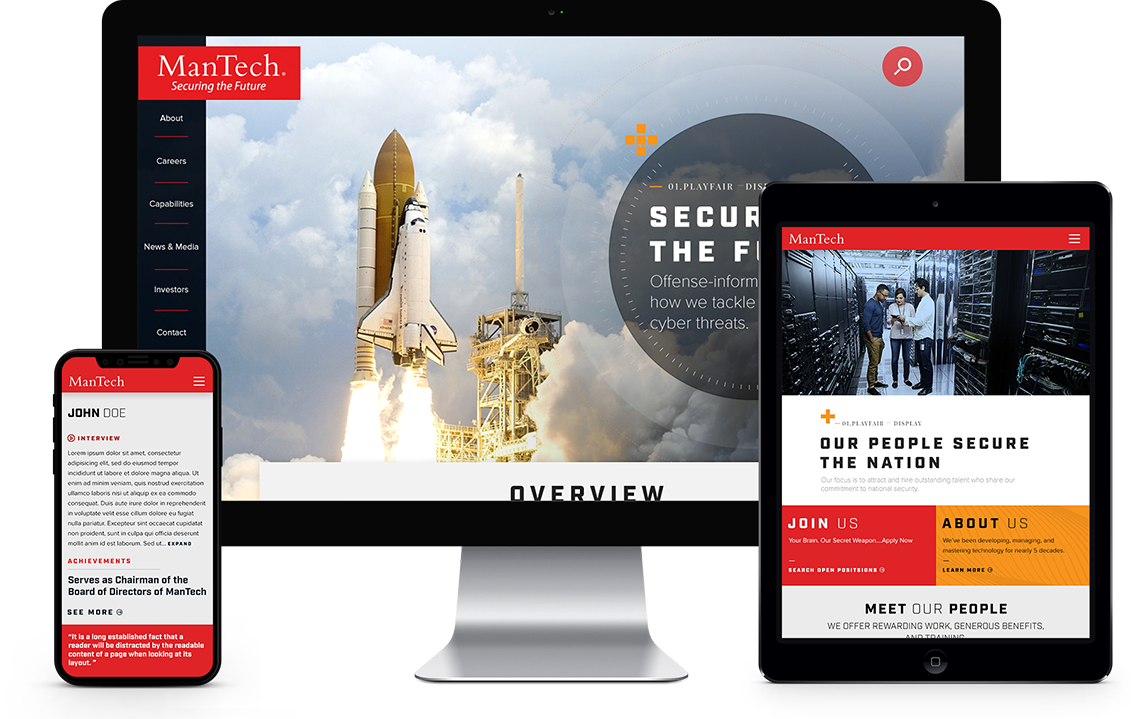
This is why it is critical to target your marketing with premium content to specific and very real buyer personas. You need to put yourselves in their shoes to differentiate your brand and fill that void with contextually relevant content before your competitors do. No matter who that buyer is, they are all facing the same quandaries:
- I have a problem, but I don’t know what the solution is.
- I know what some solutions are, but I don’t know which one is best for me.
- I know which solution I want, but I don’t know who to buy it from.
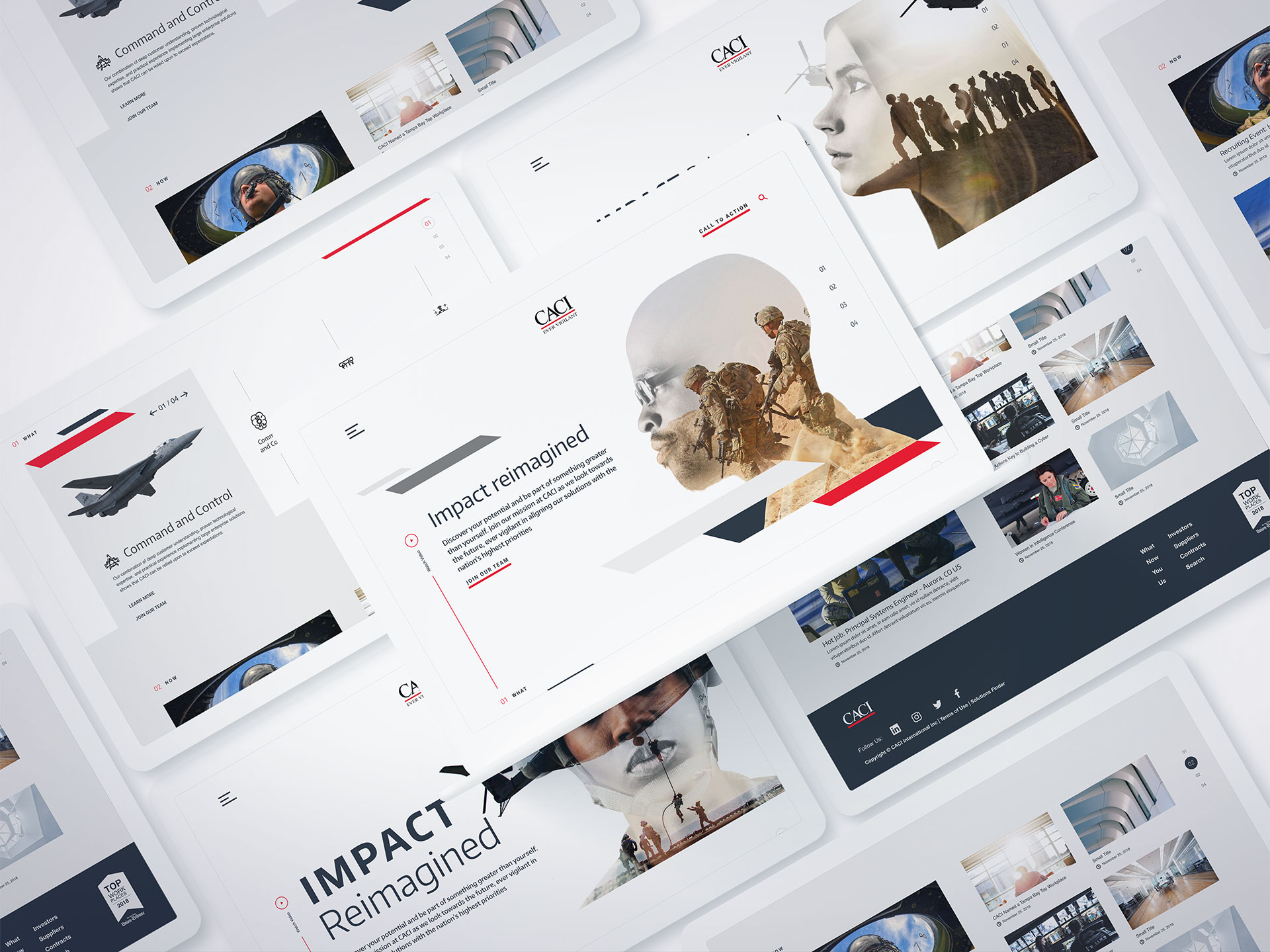
The best way to answer all of these questions is with content. While the solution seems simple, many companies do not yet have mature content marketing strategies and lack the in-house resources needed to generate enough thoughtful, relevant content to drive engagement that results in traction for their brands in this market. The other challenge is harnessing the thought leadership of their subject matter experts. The people inside their company who have the expertise on issues most relevant to your target audience often do not have the time or have not been engaged to contribute content on a regular basis. As a result, marketers are struggling not only to develop the editorial calendar but more importantly the content itself.
Digital marketing agencies acknowledge that the secret to successful content marketing is two-fold. Firstly, it requires thoughtful and relevant content to your target personas, but also memorable brand application. Put yourself in the shoes of a government buyer evaluating you and your 10 closest competitors for a new contract. Your company may have the most powerful piece of thought leadership out there, but if it’s not branded or visually appealing it will likely get lost in the number of companies and content being considered. The last thing you want is to invest time and energy in an in-depth whitepaper, but have the reader not even remember which company it came from. Well-branded collateral allows you to layout content strategically, emphasize the key points and create brand association with the powerful words on the page.
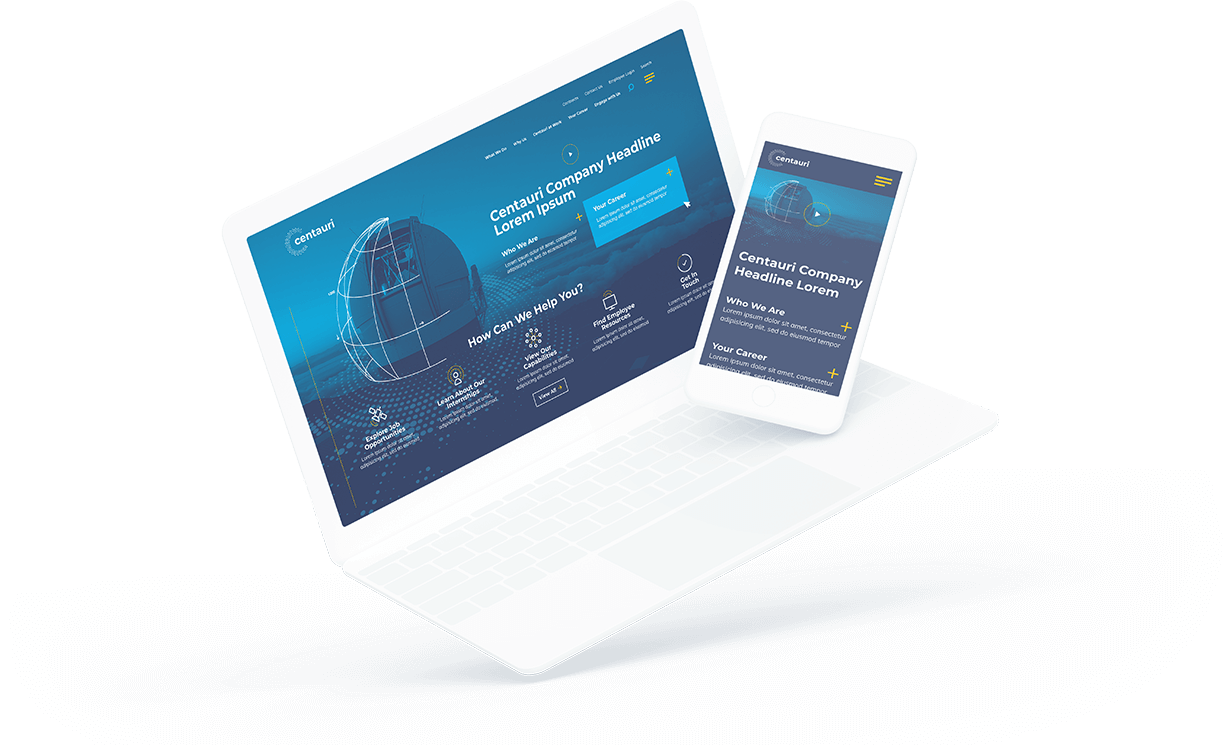
It’s no secret that a lot of successful marketers are turning to agencies to overcome this very challenge. When they do, they realize very quickly that a digital marketing agency can capture more eyeballs – and drive much more significant and targeted brand engagement—by empowering them to become masters of their own content for far less than what they used to spend on traditional ads in all of those long-gone publications. They all once had their time and place – and so will your brand if you continue to allow your competitors to outmarket you and find a cozy place for their content in the minds of your buyer.
Contact us to discover the ways Bluetext can optimize your digital content marketing strategy.
The COVID pandemic has put a pause on many personal and business practices, with one stand-out exception. In the midst of COVID, digital transformation hasn’t slowed; instead, it’s actively accelerated as we try to keep up with today’s digital customers. “Digital transformation” has become a powerful buzz-word that has executives signing checks left and right. Many companies are investing heavily in digital, and while these investments continue to grow, the expected results often fail to materialize. But why? Technology and unsuccessful efforts to scale are often the first things we look to blame, but the real issue may be more deeply rooted.
Digital Transformation Requires a Culture Shift
In order to successfully execute a digital transformation, change must be driven from the top down. Beginning with management, the company as a whole must not only understand the goals and reasons for changing, but also the urgency for doing so to successfully prepare for a more digital future.
Companies are getting 50% more business and leads online than ever before, and this number will only continue to grow. To capture this ever-expanding market, it’s important to understand that the tactics and processes that got you to this point need to be an ongoing initiative. Digital transformation is often not one and done, it will not be sustainable without the future introduction of more digital practices.

How Can You Avoid Digital Transformation Failure?
You can start by making sure your team is on the same page regarding what tactics and strategies will make your business successful in the digital age. One method many companies are using to enter the digital space is through digital briefing centers and virtual events. Engaging the entire leadership team as well as your customers in the virtual space is a great way to lead a digital transformation in a world where fewer interactions are in person. Digital briefing centers also have the ability to be available at any time of day, allowing prospects to access your content at their convenience, not yours.
In today’s virtual world, differentiation through digital engagement is critical. Take a look at Bluetext’s work in the Digital Briefing Center space and find out how you can recreate the in-person experience.
Watch Bluetext founder, Jason Siegel, discuss the ways you can avoid digital transformation failure with Travelocity Founder and keynote speaker Terry Jones in this week’s Virtual Marketing Minute.
Now more than ever it’s important to understand and master the skills of remote client relations and project management tasks. Even though the pandemic will not last forever, we have the opportunity to take a look at lessons learned, opportunities created, and skills we’ve grown to use daily. Not only will this help make one a better and more flexible employee, but allow the opportunity for a digital agency to tackle a whole new client base. Let’s dive into some of the most important skills of remote client work.
Over-Communication
Striving to over-communicate with clients is always a good thing. Scheduling weekly status calls, both for the internal project management team and with the client, is great to keep a consistent base of communication and ensure that everyone is aware of where the project stands to date. These weekly calls can be used to review completed and upcoming deadlines, updates on various levels of project status, and resolve any questions in real-time. Having frequent touchpoints with the client helps reach deadlines successfully. If frequent phone calls and video conferences are not possible, never underestimate the power of an email! Digital project managers understand how busy schedules can get, and sometimes that meeting really could have been an email.

Patience
Patience and understanding is an extremely necessary skill for managing remote client work. Remember, no work-from-home situation is the same. Especially in the wake of COVID-19, many employees who were not prepared or planning to work from home are finding their kitchen table is doubling as their new conference room. Try to be understanding and empathetic with background noise, kids, or pets interfering during conference calls. Don’t get frustrated when someone experiences issues with virtual meetings or is having trouble with technical issues – instead, offer some assistance. Everyone’s circumstances and experience with remote work are different, so be as empathetic as you can.

Cross-Team Collaboration
As a digital marketing agency, Bluetext offers a wide variety of services – which translates into a wide variety of roles and skillsets. Many client projects include multiple tracks of deliverables, such as messaging, branding, website design, and development. It is more important than ever in a remote workplace to keep the lines of communication across these tracks clear and consistent. While agencies might not have the luxury of gathering all creatives, copywriters, project managers, and developers in one room to brainstorm or ask one-off questions, it’s important to keep everyone on the account on the same page. Bluetext recommends setting up recurring scrum meetings to run through the statuses of all parallel tracks, or regular touch bases within the different departments. Online collaboration software, such as Slack or Teams, is a great place to facilitate conversation between groups for questions, blockers, or ideation.

Organization
Although organization is a keystone of regular client and project management, switching to remote work requires an even stronger set of organizational skills. Make sure you have a separate work space (that does not include your bed or the couch) where you can have a space to focus and create a productive working environment. This should be free of distractions and allow you to maximize your full potential. In addition, comprehensive project schedules, project trackers, to-do lists and conference reports help keep yourself, your team and your client organized with clear-cut deadlines, updates and project progress.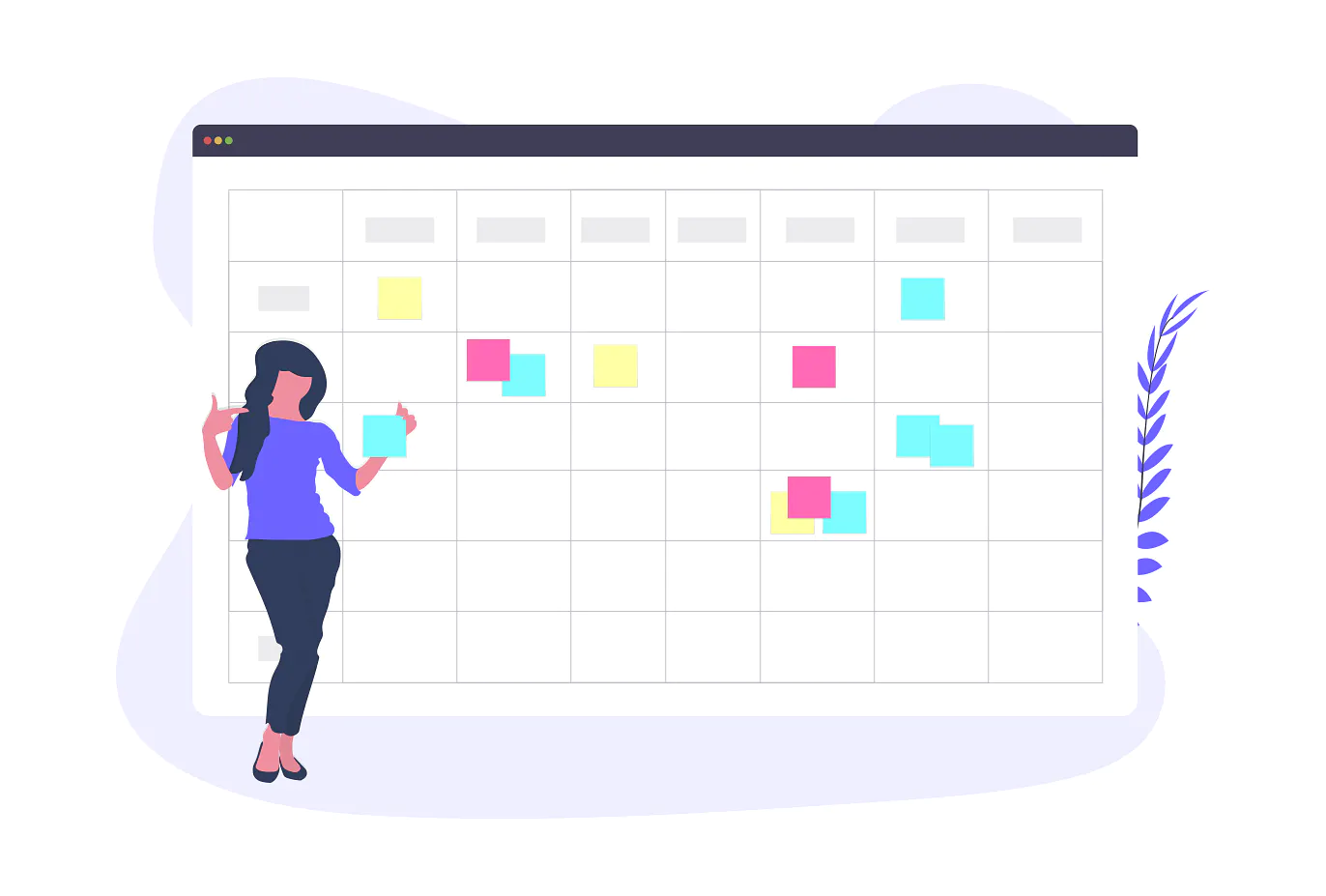
Time Management
When doing remote work, it can be difficult to differentiate between work-life and personal life. Sometimes, even just reminding yourself to take appropriate lunch breaks can make all the difference. Block chunks of time off on your calendar for lunch breaks and to tackle specific projects. This helps keep yourself accountable and make sure you’re accomplishing everything on your to-do list. In addition, prioritization of high-priority and low-priority tasks will help you be extremely successful. Identify the items on your to-do list that need to be tackled right away and which can wait. This better helps you manage your time as well as delivering items on deadline, which all leads to a more successful project.

Adaptability
Adaptability is one of the most critical skills for remote client and project management work. You must be willing to test out new tools, new applications and whatever can help you perform your job successfully. In a new environment, new tools are inevitable. Your client might even have their own favorite tools they want you to try out. Always willing to be adaptable and try out new things!
At Bluetext, we’re extremely dedicated to our work and our clients, remote or not. We have a variety of clients based outside of Washington, D.C., such as Wallix, based in France; AppGate, based in Texas; Citrix, based in New York City. We have the talent, skills, and resources to take your business to the next level, no matter where you are.
Branding is one of the most important marketing strategies for a company. Your brand tells a story about who you are and what you do to prospects, clients, and, importantly, your internal employees. Branding typically involves a consistent and recognizable set of design elements, including colors, typography, logos, messaging, graphic elements, and more. It allows your company to make a consistent, meaningful, and lasting impression with consumers. Through your brand, you have the opportunity to stand out amongst the competition, showcase a product, but also drive new business by raising awareness for your company. But how do you keep branding consistent with various different products and/or services you want to highlight?
 The Rise of Sub-Brands
The Rise of Sub-Brands
Sub-branding is a lesser-known, yet equally as important, subdivision of a branding strategy. In an article from Brand Marketing Blog, “If you are a brand builder, then often there is more than one brand that you are building: the brand of your business and the brands of your products.” Sub-branding is focused on creating new subsections of the parent brand to best fit the specific products and/or services you offer to your customers. This is directly tied to the solution architecture of the company – the structure of how different offerings of a company are connected. Typically, a sub-brand strategy shares the same fundamental factors of the overarching brand’s personality, tone, design, and image. This can include sharing common factors such as typography, imagery, and more. They utilize outside elements, including graphic elements, primary colors, messaging, etc., to stand out from the parent brand. What makes a sub-brand unique is its goal to appeal to a very specific, niche audience.
Sourcefire Brands and Sub-Brands
To fully understand what a sub-brand is, let’s take a look at one of the most successful sub-brands in the Cybersecurity industry: Sourcefire. When Bluetext rebranded the company, we also worked with the Sourcefire team to sub-brand each of their most popular product offerings: FirePower, FireSight, FireAmp, and FireCloud. Each product has its own logo for users to differentiate between the four. While each product has its own unique logo, they still follow the overarching Sourcefire branding within the sub-brands: matching typography, custom graphic elements, abstract textures, and bold primary colors.

 The Impact
The Impact
Sub-branding is extremely important as it creates exposure for both the parent and child brands. It helps customers easily differentiate, organize, and search in a complex environment. It creates the opportunity to engage both new and existing audiences while taking advantage of the trust previously built in your specific industry. Because a sub-brand appeals to a very specific and niche customer, you have the affirmation that your marketing messaging is as targeted as possible. Your customers have the ability to have a unique, custom experience that is completely separate from the parent brand and in turn, are more likely to engage with the parent brand’s other products if they connect with an individual sub-brand.
Want to elevate your brand even more? Bluetext can help.
When building and launching digital campaigns, many of the key determinants of success are evaluated through digital engagement measurement and tracking. However, as websites and ad-tech have evolved in recent years, so have protections and privacy policies. It’s easy to write off the need for a comprehensive privacy policy, however, this is a recipe for disaster in the age of big data regulation and enforcement. To avoid the FTC and International regulators ire, digital agencies such as Bluetext recommend taking data privacy measures that cater to the most comprehensive regulations in effect.
For businesses with users outside of the United States, being aware of the General Data Protection Regulation (GDPR) and similar legislation is an essential consideration. The GDPR has created strict provisions for EU web users’ privacy and data rights, which extends to US browsers. As global privacy legislation evolves, North American businesses that handle global users’ data must comply with current regulations and build with an eye on future compliance. Top digital marketing agencies advise and design campaigns and websites with these policies in mind to provide frictionless engagements.
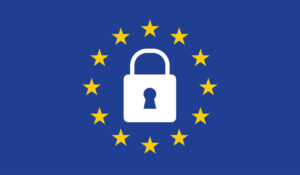
What is the GDPR?
The GDPR is an extraterritorial set of provisions that updated Europe’s data protection standards. The privacy policy strengthens the protections set in 1995, adding requirements for greater transparency and disclosure to users, in addition to modernizing the “cookie law” of 2002.
The GDPR goes beyond earlier regulation, focusing on personal data protection regardless of the type of data and how companies must document user consent in a transparent fashion. These protections apply to all persons browsing within or originating from the European Union.
The term “personal data” is not synonymous with “personally identifiable information”, or PII. PII has traditionally been a legal concern for American businesses, and it refers to a more defined set of information than the GDPR model. PII does not have to be context-specific to be regulated, in contrast, the GDPR emphasizes the consumer risks of data aggregation.
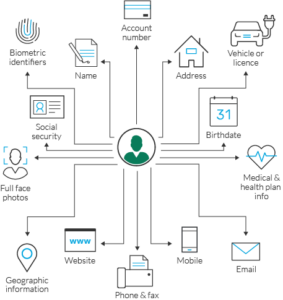
My business isn’t located in Europe, why should I care?
The GDPR’s reach is far greater than the medley of privacy protections in effect across the United States. Violators of the regulations risk penalties of €20 million ($22.6 million as of writing) or 4 percent of global annual revenues for the preceding fiscal year, whichever is greater. Comprehensive legislation at the state level in the U.S. has been varied, many forward-thinking businesses are beginning to take steps to adapt their practices to comply with the California Consumer Privacy Act (CCPA). Ultimately every website will have to comply with some set of standards, so it is wise to be proactive and implement privacy protection now. Top digital marketing agencies such as Bluetext are taking steps to protect against potential violations of the CCPA and GDPR by changing cookie collection practices, recommending new data collection practices, and designing clear consent forms.
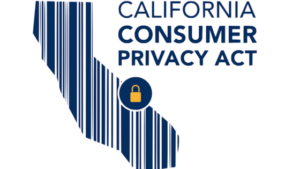
Changing privacy policies impact sites from the bottom up, starting with development and design
In a digital-first world, data is a critical component of many businesses online and offline strategies. With the implementation of the GDPR, marketers and web developers must be more diligent about what data we collect, the means by which we collect it, and how we handle sensitive information. When building or updating websites, web developers, and digital project managers should take this as an opportunity to rethink how sites can be more transparent and adopt the Privacy by Design framework.
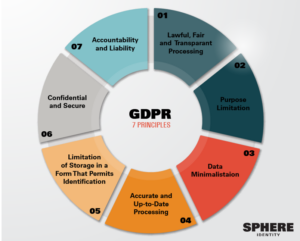
The Privacy by Design framework highlights design-thinking approaches to development prior to launch to eliminate the need for post-hoc privacy fixes once a project is live. Solutions such as making privacy the default setting for site visitors, making privacy standards visible and open, and giving users specific privacy information notices are easy considerations to add to the development plan.
If your site is already live, consider a development sprint focused on auditing areas of potential weakness. In assessing your data hygiene, your team can look for unsafe or unnecessary modules that can be disabled, particularly those found in APIs and third-party libraries. Adtech integrations may help source leads and retarget with better precision, but validating that their pixels and tracking are in alignment with GDPR best practices is essential.
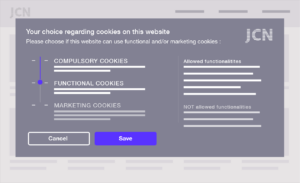
The aesthetic design of websites is also impacted by changing privacy practices. GDPR consent requires clear and explicit opt-in notices to users. Designers, user experience experts, and marketers should work collaboratively to update existing landing page components to incorporate new disclosure features. One simple mantra to internalize in the design phase? Offer accessible, clean choices around cookies and pixels.
When building clear user permissions for data capture, the GDPR requires that websites define data retention and deletion plans for all the personal data collected. Adding GDPR conscious logic to scripts at the code level of your site can save time for site custodians and business analysts alike in the future.
Updating best practices for common marketing tactics and tools
Updating the fine print on your Privacy Policy is just the first step of complying with new regulations; common marketing campaign tactics such as cookies should also be rethought through the lens of compliance. Cookies are the small data files that can be placed on users’ browsers and provide a trove of useful insight to website operators. Under the GDPR, businesses are legally liable for any activities on their sites, specifically protecting user data from third-party cookie tracking.

Many businesses use cookie tracking to better measure the impact of their marketing strategies, and they combine tracking with other user data to build user personas. While this has been an accepted practice in the past, the new regulation now requires clear permission from European users to collect this information, whether the site is for an American or French company. As noted in the impact of GDPR on design, cookie usage has to be explained on either the homepage or a second-level page on the navigation. This immediate opt-in should allow users to understand how their data is collected, the purpose of the data, and how long they are consenting to these cookies.
As a website operator, sites must withhold all cookies and trackers on your website until you have received clear and explicit user consent on each type of cookie and tracker. This consent has to be given freely, described in explicit plain language, and users must have the ability to withdraw consent. The rights of users under the GDPR are extensive — to comply, website custodians must update their privacy policies and opt-in tools.
This sounds like a lot of work, why should I care?
Ultimately, thoughtful privacy policies, development, and design provide a safeguard for both businesses and users. The GDPR gives consumers new rights to access and manage their data on digital platforms, and businesses that do not adapt to meet these regulatory requirements can face steep fines. While these changes can seem overwhelming, a top digital marketing agency such as Bluetext can guide your business through the murkiness of data privacy design and compliance.
Best Practices for Conversion Driven UX Design
If your company has a website published in the public domain, chances are, you know a thing or two about conversion goals. Conversion goals help to measure marketing performance, set goals and most importantly, provide conversions for a company. On websites, conversion goals can range from lead generation to sales to even page views. The point is, you must find your conversion goal and optimize your website toward it. There are various design choices that are simple, yet efficient in achieving different types of conversion goals. The goal is to keep it simple – the lesser the cost per conversion, the higher the return-on-investment (ROI).
Hack Your Way to Higher Conversion Rates
Less is More
According to CEO of Chartbeat, Tony Haile, “You have just 15 seconds (or less) to convince new visitors to stay through the power of your site’s design alone.” Compared to years ago when web-design trends were over-the-top and animation and flash were all the rage, clean and simple flat designs are what reign supreme today. Market trends indicate today’s consumers appreciate a nice, clean layout. Impress your visitors with your content and offerings. Bombarding them with unnecessary flash and animation not only annoys them, but it also slows down the load time of your website. Whatever you do, don’t mirror your site after this masterpiece. You can always check the speed of your website using Google’s PageSpeed Insights tool. PageSpeed Insights analyzes the content of a web page, then generates suggestions to make that page faster.
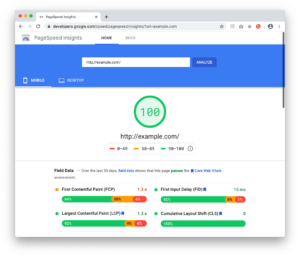
Fire Excessive Fonts
When a user lands on a site with various different styles of old and new fonts, it becomes a disjointed and confusing user experience. If you’ve got more than two or three fonts on your homepage, trim them down to create a more modern look. Having two primary fonts keeps your website consistent and organized. While you’re at it, consider increasing your font size for readability. Smashing Magazine reported that “anything less than 16 pixels could impair your site’s readability.” Your website should not only be consistent but also readable.
Give Content a Break
Put yourself in the user’s perspective. Nothing is more intimidating and scary than landing on a page with big blocks of unbroken text. You would bounce too! Large text fields are an immediate red flag that digesting the material will be time-consuming and complex. Mix it up and improve your site’s readability by adding headings, subheadings, bulleted lists and numbered lists to break down content into easily-digested segments.
Improve Your Visuals
While you’re thinking about breaking up content, consider adding imagery. Customers or prospects may need to literally “see it to believe it” and images can be a powerful tool to help contextualize value. Custom graphics and visuals are a great option that is sure to impress users. Cheesy stock photos can seem generic and off-putting, so consider upgrading to simple tools like Canva and PicMonkey which make it easy to customize your images. In addition, if you’re looking to generate confidence in your service or product, try human photography. According to various studies, images of human faces can have a positive image in driving contact form conversions. Remember, people trust people! Human faces help establish an emotional connection, which in turn makes your website a more personalized experience.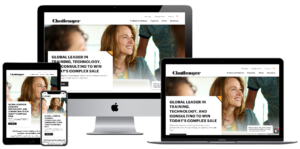
Trust in the Numbers
While imagery and human photography might make a subconscious impact on trust, seal the deal with statistics and testimonials. People inherently trust in data and social proof. Statistics can help rationalize and solidify the decision-making process, especially when compared against competitors. Highlighting elements of social proof is an extremely easy and effective way to drive conversions. Consider positioning this information higher on the page, or perhaps in eye-catching designs, so users can be sure not to miss it.
Always Open the Window
Outbound links are a critical component of the ideal SEO formula, but be sure never to lead users away from your site. Make sure that all external links open in a new window. This ensures not only the best user experience for the user, but your site will stay open and users won’t drop off in search of content elsewhere.
Make it Stick
Add a Contact or Sales call-to action-directly in the main menu. Keeping the main conversion at top of mind (and menu) ensures your users are always enabled to contact you. You would never want a customer or potential lead to finally be ready to convert, only to be lost in the site and unable to contact you. To really make your central call to actions stand out, consider implementing a sticky navigation. This means that the main menu will lock in place above your content, no matter where the user is on the page.
Need to make changes to your website to improve your navigation? Bluetext can help.
Have you ever found yourself on a website, staring blankly at the screen wondering where the rest of the pages are? Navigation is one of the most important functions of any web page whether it be a blog, product listing page, about section, or a document library. If your user doesn’t know where this content is housed, the utility of the information is lost! As a crucial element of user experience, failing to build smart navigation into your digital interface can lead to a variety of issues including secondary UX issues, accessibility problems, and increased bounce rates from frustrated users.
Let’s take a step back; what is a navigation menu, and do I still need one if I have “search”?
Navigation menus are maps of the categories or features of your content; on websites, these are known as sitemaps. These menus can appear in a variety of ways; from the traditional header locked navigation bar, to hamburger menus that pop out to link to various interior pages of a website.
While many websites have a Search function of some kind, whether it be a search bar or filter, research shows that 70% of users rely on navigating to content directly. While search features are helpful to some users, navigation menus can lead your visitors to the content they need quickly and reliably.
No matter where you are with your website, here are some quick, easy tips to help you optimize your platform for a better user experience.
1. The 3 Click Rule
Your navigation structure should be intuitive and allow users to land on any page and find what they are looking for in 3 clicks or less.
If your site has lots of content and sub-pages that relate back to a greater unifying category, take advantage of breadcrumbs. Breadcrumbs are a component of navigation menus that help users orient themselves within a sitemap. They can be embedded into the navigation bar as a dropdown, or appear in the design of the child pages on your site to guide users through the various layers of content.
2. Show Off Your Menu
Don’t try to reinvent the wheel-don’t hide your navigation menu! When a user visits your site, it’s likely one of the hundred other web properties that they have browsed in the last few days. As our digital lives have progressed, users have become accustomed to certain kinds of queues and user interface (UI) elements. Keep your navigation menu in an intuitive location, be that the left rail, top of the browser window, or a pop-out hamburger menu with an obvious icon.
3. State the Obvious
Be as clear and descriptive as possible. Avoid using vague descriptions in your navigation headings. If a user can’t tell exactly what to expect from a page in the navigation, there’s a chance they won’t make it past the landing page. Use descriptive language to identify what your pages contain, less is more with heading titles. Streamline the main menu display experience where possible and take advantage of dropdown menus for categories with multiple child pages. If you hyperlink to pages within your site from banners or in-line content, make your hyperlinks obvious!
4. Stay on Topic
Don’t let SEO impact your navigation taxonomy. While ranking well in search engines is important, packing your Headers and menu items with keywords that don’t relate to the page contents won’t do you any favors with users. Avoid this common pitfall by using the copy and metadata on your pages for SEO strategies, leave your headings and menu items clean and accurate for better UX.
5. Lead with a Mobile-First Mentality
Over 53% of all web traffic occurs on mobile devices. When designing your navigation menu, start by thinking about how users might visit the site; on both their computers and mobile devices. Take advantage of responsive designs that can adapt to a variety of browsers and devices rather than discovering post-launch that your navigation is broken.
6. Stop Guessing! Test Your Audience
If you’ve updated your navigation menu but still see disappointing numbers for bounce rate and click through on your site, test your experience. User behavior can be monitored with tests such as a Crazy Egg Heatmap, which illustrates where your users are browsing on the page.
TLDR: improving your navigation design can improve your relationship with users
Confusing or obscure navigation will lead to fewer visitors to your interior pages and can result in awful analytics reports. Clear and effective navigation can enhance visitors understanding of where your content is located, instill confidence in browsing your site, and create credibility about your product.
Do you need to up your navigation game but you’re not sure where to start? Get in touch with us.
The recent COVID-19 outbreak has had ripple effects across almost every industry. Around the world, the global pandemic has altered the way we live, socialize and even conduct business. In this unprecedented scenario clouded with uncertainty we all, especially digital marketers, are wondering: What needs to change? And how drastically?
When it comes to search engine optimization strategies, digital marketing and content agencies are continually researching the latest trends and evolving best practices. In the current environment, the role of a top digital marketing agency is to keep a pulse on the present, while also looking forward to strategies that will drive long-term success. Here at Bluetext, our digital marketing analysts are harnessing a variety of tactics to support overall business goals and serve users the best we can during these uncertain times. Check out the top ways we’ve been monitoring and optimizing around current events.
Strength in Numbers
When in doubt, trust the data! Using top marketing analytical tools, such as SEMRush and Moz, one can track the aggregate behavior of online users. Gathering the most up to date data can be tricky, so don’t do it alone. The more expertise and tools, the better. Trust a marketing analytics agency to help break down the numbers into a comprehensible story of website traffic. Use professional tools, such as Google Analytics and Google Search Console, to monitor the recent fluctuations in your page traffic. Do a keyword analysis of your current keyword list to see if search volume has shifted. Google Trends page is a great tool to identify emerging patterns. Are there new phrases your customers are searching for? If the language has evolved, so should your SEO strategy. If you have chatbots for customer service transcripts, these can provide valuable insight into current needs.
In short, the data doesn’t lie. Businesses need to understand search traffic shifts to get as clear as possible a picture into whether to pivot your SEO strategy or not.
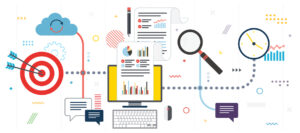
Content is King — Still
Ultimately any changes to your SEO strategy should be driven by your unique business needs. For example, a brick and mortar store will need to cater to how they can serve customers at home. If your business was already available online, you may be experiencing altered user behavior as people spend more time at home and online. Every business should ask: “Is the content relevant to current needs?” Your messages may need to shift in sensitivity to the current environment. A complete overhaul is not necessary, nor appropriate. However, if there are opportunities to generate new content that supports your users in a unique time, do so. And if your business is considered essential or has been significantly impacted, you should create a dedicated page to capture all relevant coronavirus traffic. Keep the page simple, focused and sensitive. Don’t try to provide the latest breaking news, but exactly what and how your company is doing. If your business has been minimally affected, perhaps there is an opportunity to contribute to emerging conversations. Exploding Topics is a valuable tool for up-to-date trends across search engines and social media mentions. At the end of the day, users are seeking timely and accurate information now and long after the dust has settled on this pandemic.
 Optimize Often
Optimize Often
Search engine optimization is never a “one and done” task. Any digital marketing strategy requires upkeep as is the nature of the evolving industry. Now, more than ever, flexibility is paramount to staying afloat. Be proactive, be vigilant. SEO strategy will need re-evaluation in the upcoming weeks and months. No one can predict how long the pandemic will last so you must be ready to pivot to any new or resurging customer needs.
In an unpredictable environment, one thing is certain: this is our new (remote) reality. Don’t expect old strategies to work as they once did, and don’t expect this shift to “blow over soon”. Your business should be prepared to remain relevant now more than ever. There will likely be long term implications in behaviors and business operations. Get behind the shifts now and flex your agility. It will pay off in your long term business health.
If you’re looking to partner with an agency to pivot your SEO strategy, let us know.
Trends in website design are ever-evolving. It’s a fast-paced industry, but any business with a digital marketing presence should take efforts to stay informed and keep up with best practices. Just as you would ensure employees are helpful and informative to customers in a physical store, your users expect the same experience online. Here are three user experience trends that you should consider for your business’ website in 2020:
Design as a part of your business strategy.
A few years ago, chief executives might have excluded themselves from having a say in website design or functionality to focus on the bottom line. That being said, more and more companies have come to recognize the critical importance of a strong online presence. With the world participating in the digital-first movement, your website says a lot about the health of your business.
The future of the company often lies in the hands of top executives, as they typically establish the company culture and the goals with investors or the board of directors. Including top stakeholders in the design process is critical to get initial sign off and ensure their vision is incorporated. It is important to involve diverse perspectives into any web design, especially the ones writing the checks. These stakeholders offer a unique perspective in the current state and future aspirations of the company. Website strategists and UX designers should always include the top decision-makers in the room to make sure the website they are designing today aligns with the business strategy of the future.
When Bluetext recently partnered with Blue Yonder (formerly JDA), the #1 supply chain management software company in the world, we made sure to include top decision-makers from the initial discovery session, all the way through to launch of their brand new website. You can view our work with Blue Yonder here.
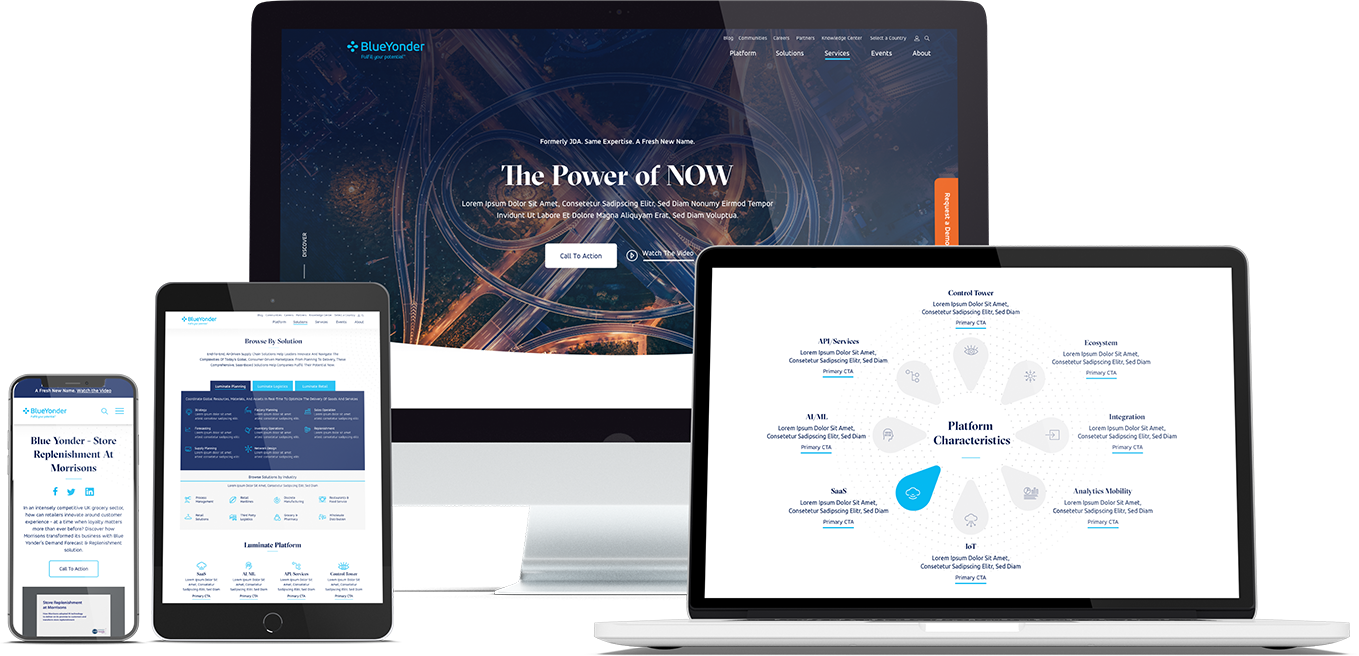
Thumb-friendly design.
With over 50% of website traffic coming from mobile devices, responsive website design has become a top priority. Menu navigation and intuitive user journey has been and always will be a top design consideration, but recently there has been a shift in attention towards mobile menu design.
How do top UX design agencies optimize for user comfort as we design for mobile? We think about adding content and important elements to the “thumb-zone”.
The “thumb-zone” includes the area at the bottom of a mobile device and on the side opposite the thumb. Test it yourself by holding your mobile device. Where does your thumb naturally fall? User studies say that about 75% of user interactions are thumb-driven, so including navigational items and important content in this zone creates a simplified and more natural user experience. In 2020, you will likely notice a lot of websites start to move away from hamburger navigation on the left side of the screen. These are often replaced by navigation bars at the bottom of the screen, aka the thumb’s natural setting.
Bluetext designed a mobile-first website for Built With Chocolate Milk, an organization that promotes the benefits of chocolate milk as a natural recovery drink. Bluetext enhanced the user experience and overall engagement through a website redesign that emphasizes the science-backed benefits of chocolate milk and showcases Built With Chocolate Milk’s impressive partnerships with world-class athletes such as Klay Thompson of the Golden State Warriors.
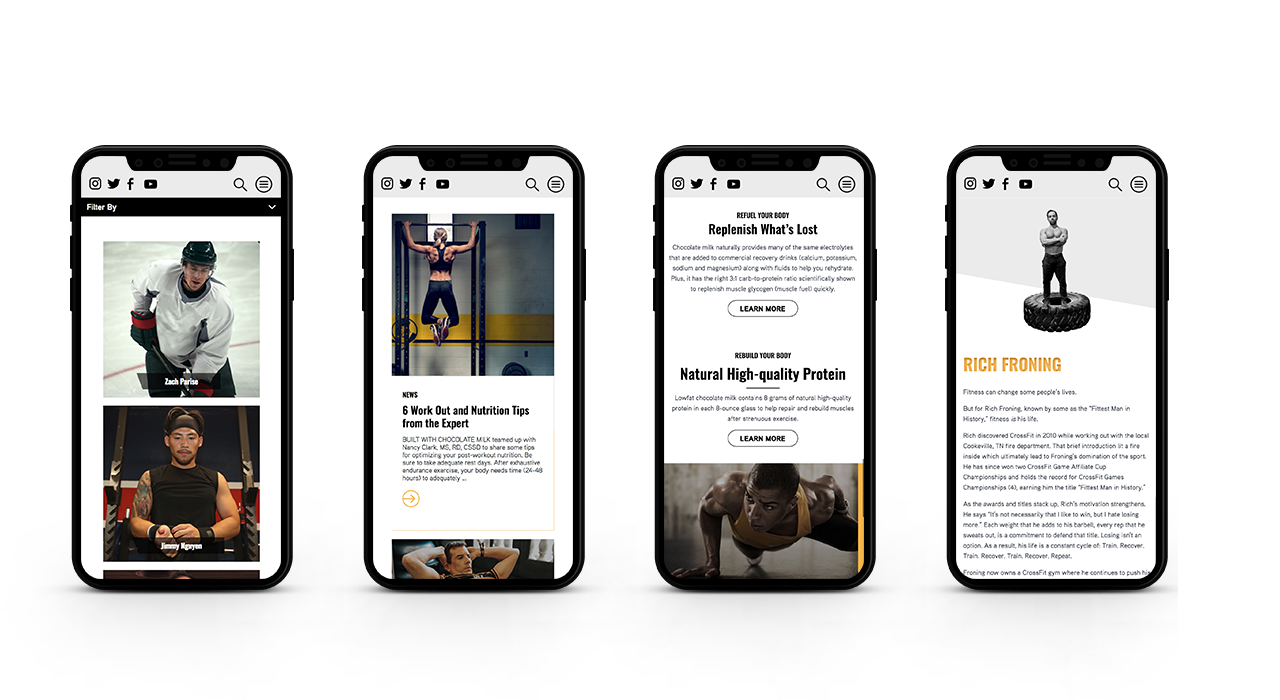
Accessibility.
With the internet being a critical part of daily life and the rise of user-centric design, it is no surprise to see accessibility on the list. When thinking through how a user gets from point A to point B, UX designers should be inclusive of those people who may have a disability and use assistive technology.
One way of keeping accessibility top of mind is to develop separate personas for users that may have low vision, deafness, or other disabilities. Persona creation is a common exercise for top digital marketing agencies when beginning a website project. But thinking beyond the expected customer personas can open insight into a more inclusive and realistic set of potential web users. Having empathy for these personas while designing will help ensure little tweaks are made that allow them to equally experience your content. For example, ensuring text is large enough for users with low vision and inclusion of space for video transcripts are all UI elements that make the website more accessible to all. With the rise of imagery- and animation-heavy sites, adding alt text to all website imagery will allow screen readers to provide context to visually impaired users. Plus, this step will kill two birds with one stone by improving your site’s SEO ranking with keyword-rich descriptions.
Added bonus: Google prioritizes websites that are more accessible to more users, so if you want to boost your SEO rankings, keep accessibility top of mind.
When the SSB Bart Group, the leading provider of accessibility solutions and software, needed a new brand to increase its market share and continue on its growth trajectory, it chose Bluetext to deliver a new name, brand, and website that would focus on its people and expertise. After a thorough discovery process, competitive review and market analysis, Bluetext proposed Level Access to simplify the brand and its promise to the industry. The new look and feel and how it is presented on the website reflects Level Access’ mission “to create a world where digital systems can be made readily accessible to users with disabilities—enabling digital technology to become a profound empowering force in their lives.”
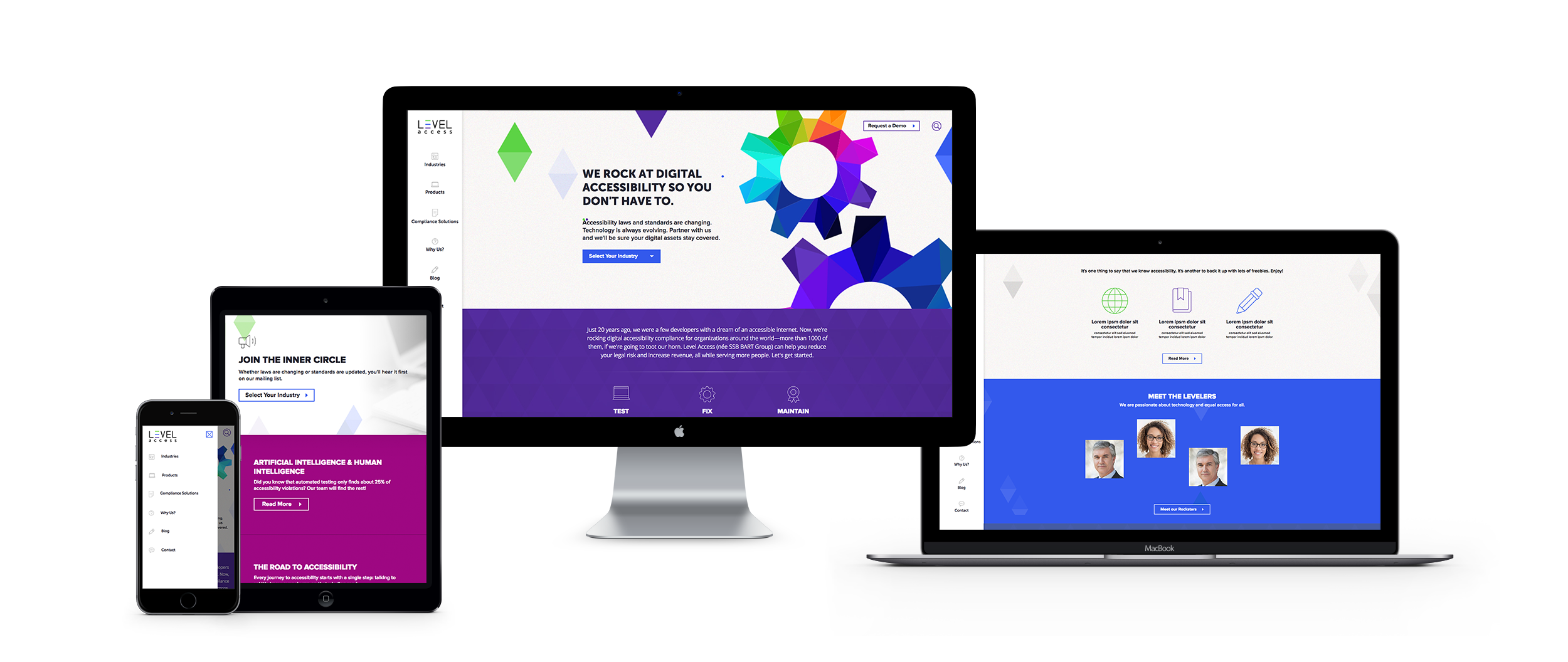
Looking for more information about the state of web design and where we’re headed? Check out some more of our case studies.
As the world has changed in the blink of an eye, so has the way we market to consumers. Now, more than ever, your website exists as BY FAR THE MOST IMPORTANT doorway to your brand and your brand experience. While stores stay shut, and face-to-face interaction is vastly limited, brands will rely on reaching their target audiences via their websites. Therefore, your website is mission-critical to your success.
Bluetext has published a 5 part blog series to help you think about and pressure test if your website is the best it can be.
Virtual Executive Briefing Centers are a valuable resource for companies wishing to show customers and prospects their full range of solutions in action, especially new solutions that the partner may not have implemented yet in its own organization. Customized presentations, live demos and in-depth discussions can be arranged. VEBCs offer a lot of great benefits for organizations including:
- Present your brand in a very innovative way with the latest HTML5 and video technologies
- Reach a wider audience, save money and drive efficiencies by reducing travel costs to visit a physical center
- Get your thought leaders delivering their message to a wider audience than their physical weekly calendar allows
- Deliver vertical specific messaging and solutions in a customized fashion
- Personalize the experience based on the understanding of the audiences job title, history with the enterprise, and other components the digital environment can capture and feed into the site
- Juice up your SEO with a smart build and customer journey that enhances your SEO footprint
Bluetext has had a lot of experience designing and developing Virtual Briefing Centers. Here are just a few examples of the innovation we have helped drive for our clients:
McAfee and Intel Security’s Future Agency
McAfee and Intel turned to Bluetext to design a campaign to demonstrate the advancements in cyber security that the companies are driving across the Federal Government. Named The Agency of the Future and found on the web at futureagency.com, the solution integrates an interactive, 3D experience and a series of videos with lead generation integrated throughout. The experience was enhanced with a continuous monitoring webcast that targeted federal IT security experts and drew more than 3000 leads. The campaign won major kudos at McAfee corporate.
CSC’s Digital Briefing Center
CSC’s Digital Briefing Center is where customers, partners and prospects from across the globe can come to learn more about the key technology conversations and market shifts CSC is driving into the market.
The center is driven with immersive 3D video technology that is completely interactive through Html 5 overlays throughout the user journey.
Following launch, Bluetext’s collaborative creation with CSC’s Digital Marketing team became the top performing component of the csc.com global web presence, a huge feat for a Fortune 500 corporation.
Version 2.0 features new capabilities spanning:
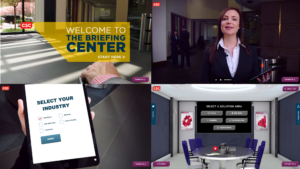
-
Multi-floor scalability
-
Triple screen experience
-
Dynamic social media integration
-
Triggered infographic visualizations synched with briefing videos
-
Chaptered video interactivity
The following video of CSC’s head of global brand and digital marketing talks about this project:
TalkShop by Cooper Thomas
From corporate meetings to conferences and workshops, connecting with your workforce and customers is an essential element of business. Bluetext was hired by Cooper Thomas to help enhance their virtual training and meeting services and next-generation virtual platform that can help their customers get the most out of their customers’ virtual events.
With their virtual event platform, you can now connect with employees, customers, and clients conveniently and cost-effectively. The unique speaker-training program guides your presenters to deliver more effective and engaging virtual presentations. The speaker coaches provide focused support to help busy subject matter experts become polished presenters. They also provide project management and program support for events ranging from single training sessions to multi-day conferences, as well as on-site support for virtual and face-to-face events.
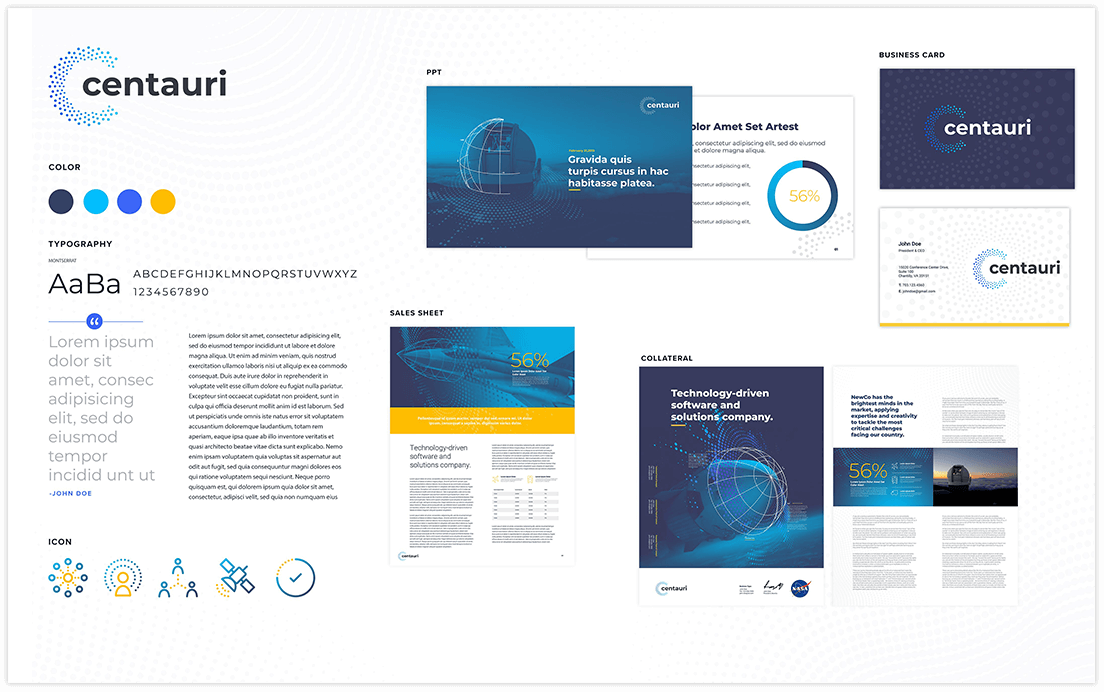 The Rise of Sub-Brands
The Rise of Sub-Brands
 The Impact
The Impact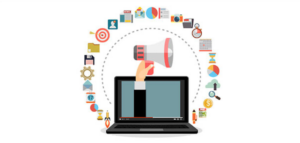 Optimize Often
Optimize Often